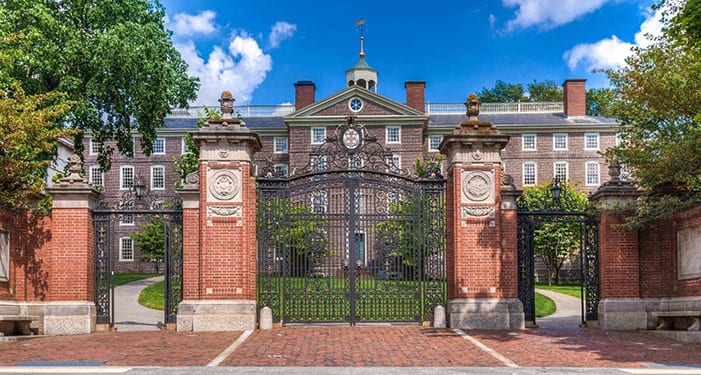Meta Description: Discover the best universities for financial aid in the USA. Explore generous scholarship and grant opportunities that help students afford quality education without excessive debt.
Pursuing higher education in the United States can be financially daunting, but many universities offer robust financial aid programs to help alleviate the burden. This article explores the top universities renowned for their generous financial aid packages, ensuring that students from diverse socioeconomic backgrounds have access to quality education without excessive financial stress.
1. Harvard University
Harvard University stands out not only for its academic prestige but also for its commitment to financial aid. The university’s Harvard Financial Aid Initiative ensures that students from families with incomes below a certain threshold receive full financial aid, covering tuition, room, board, and other expenses. This initiative makes Harvard one of the most accessible Ivy League institutions for students regardless of their financial circumstances.
2. Stanford University
Stanford University is renowned for its need-blind admission policy, meaning that students are admitted based on their academic and personal merits rather than their ability to pay. Stanford also guarantees to meet the demonstrated financial need of all admitted undergraduates through a combination of scholarships, grants, and work-study opportunities. This commitment ensures that financial barriers do not hinder talented students from attending Stanford.
3. Princeton University
Princeton University’s financial aid program is among the most generous in the nation. The university meets 100% of the demonstrated financial need for all admitted students through grants and scholarships, ensuring that students graduate debt-free. Princeton also offers a no-loan policy, replacing loans with grants that do not need to be repaid, further reducing the financial burden on students and their families.
4. Yale University
Yale University is committed to making education affordable for all students, regardless of their financial backgrounds. The university’s need-based financial aid program ensures that students receive grants and scholarships instead of loans, allowing them to graduate with minimal debt. Yale’s financial aid policies aim to create a diverse and inclusive student body by removing financial barriers to higher education.
5. Massachusetts Institute of Technology (MIT)
MIT is known for its strong commitment to financial aid and accessibility. The university meets the full financial needs of all admitted students through a combination of grants, scholarships, and work-study opportunities. MIT’s financial aid packages are designed to ensure that students can focus on their studies and pursue their academic and career goals without the burden of excessive student debt.
6. Columbia University
Columbia University’s financial aid program is designed to make education affordable for students from diverse socioeconomic backgrounds. The university meets 100% of the demonstrated financial need for all admitted students through a combination of grants, scholarships, and work-study opportunities. Columbia’s commitment to financial aid helps create a supportive and inclusive campus environment where students can thrive academically and personally.
7. University of Chicago
The University of Chicago offers a generous financial aid program to support students throughout their academic journey. The university meets 100% of the demonstrated financial need for all admitted students through grants, scholarships, and work-study opportunities. The University of Chicago’s commitment to accessibility and affordability ensures that students can graduate with a world-class education without financial hardship.
8. Duke University
Duke University is committed to ensuring that all admitted students can afford to attend through its need-based financial aid program. The university meets 100% of the demonstrated financial need for all admitted undergraduates through a combination of grants, scholarships, and work-study opportunities. Duke’s financial aid policies reflect its commitment to diversity and inclusion in higher education.
9. University of Pennsylvania
The University of Pennsylvania’s financial aid program is designed to make Penn education accessible to students from all financial backgrounds. The university meets 100% of the demonstrated financial need for all admitted students through grants, scholarships, and work-study opportunities. Penn’s commitment to financial aid supports its mission of providing a transformative educational experience for students.
10. California Institute of Technology (Caltech)
Caltech offers a robust financial aid program to ensure that students can focus on their studies without financial worry. The university meets the full demonstrated financial need of all admitted students through a combination of scholarships, grants, and work-study opportunities. Caltech’s commitment to accessibility and affordability makes it an attractive choice for students pursuing excellence in science and technology.
Conclusion
In conclusion, these universities exemplify excellence not only in academics but also in their commitment to making higher education accessible through generous financial aid programs. By meeting the demonstrated financial needs of admitted students and reducing reliance on loans, these institutions empower students to pursue their academic and career aspirations without the burden of overwhelming debt.
FAQs
1. What does it mean for a university to be need-blind in admissions?
A need-blind admission policy means that a university evaluates applications based solely on academic and personal merits, without considering the applicant’s ability to pay tuition. This policy ensures that a student’s financial circumstances do not impact their chances of admission.
2. How do universities determine financial need?
Universities determine financial needs by evaluating factors such as family income, assets, household size, number of siblings in college, and other financial obligations. They use this information to calculate the amount of financial aid, including grants, scholarships, and work-study opportunities, that a student requires to attend.
3. What is a need-based financial aid package?
A need-based financial aid package consists of grants, scholarships, loans (which may be subsidized or unsubsidized), and work-study opportunities offered to students based on their demonstrated financial need. The goal is to bridge the gap between the cost of attendance and what a family can afford to pay.
4. Do universities offer merit-based scholarships in addition to need-based aid?
Yes, many universities offer merit-based scholarships to attract talented students based on academic, athletic, artistic, or other achievements. These scholarships are awarded regardless of financial need and can supplement need-based financial aid packages.
5. What is a no-loan financial aid policy?
A no-loan financial aid policy means that a university replaces student loans with grants or scholarships that do not need to be repaid. This policy helps reduce the financial burden on students and encourages access to higher education for students from low-income backgrounds.



